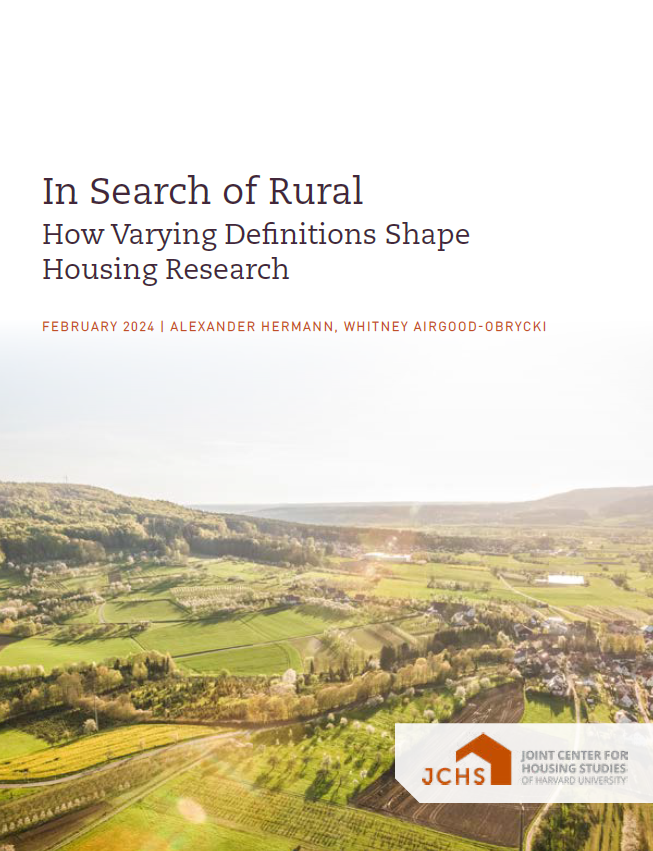In Search of Rural: How Varying Definitions Shape Housing Research
However defined, rural areas in the US face significant and unique economic and housing challenges. Yet there is no standard definition of rural used in federal policy and no consensus definition used in housing research. In this paper, we show that the choice of rural definition can matter immensely for estimates of the size of the rural housing market, the demographic and housing composition of rural areas, and the magnitude of its housing challenges. With data from the US Census Bureau’s 2019 American Community Survey 5-Year Estimates, we compare the housing characteristics of rural areas using eleven different definitions of rural. We categorize these definitions into four types—residual, character, perceptual, and policy—based on the primary purpose of defining rural. The size of the rural housing market in the US varies considerably with the definition and typology chosen, with estimates of the population living in rural areas ranging from a fraction (1.4 percent) to about one-third in 2019. This variation has important implications for the basic demographic and housing stock characteristics, as well as the extent of housing challenges, in rural areas. The magnitude and nature of housing challenges and realities in rural areas remain understudied phenomena. At a minimum, researchers examining rural areas should be intentional about the definition of rural they employ and, when possible, should consider how alternative definitions of rural might materially affect their findings.

